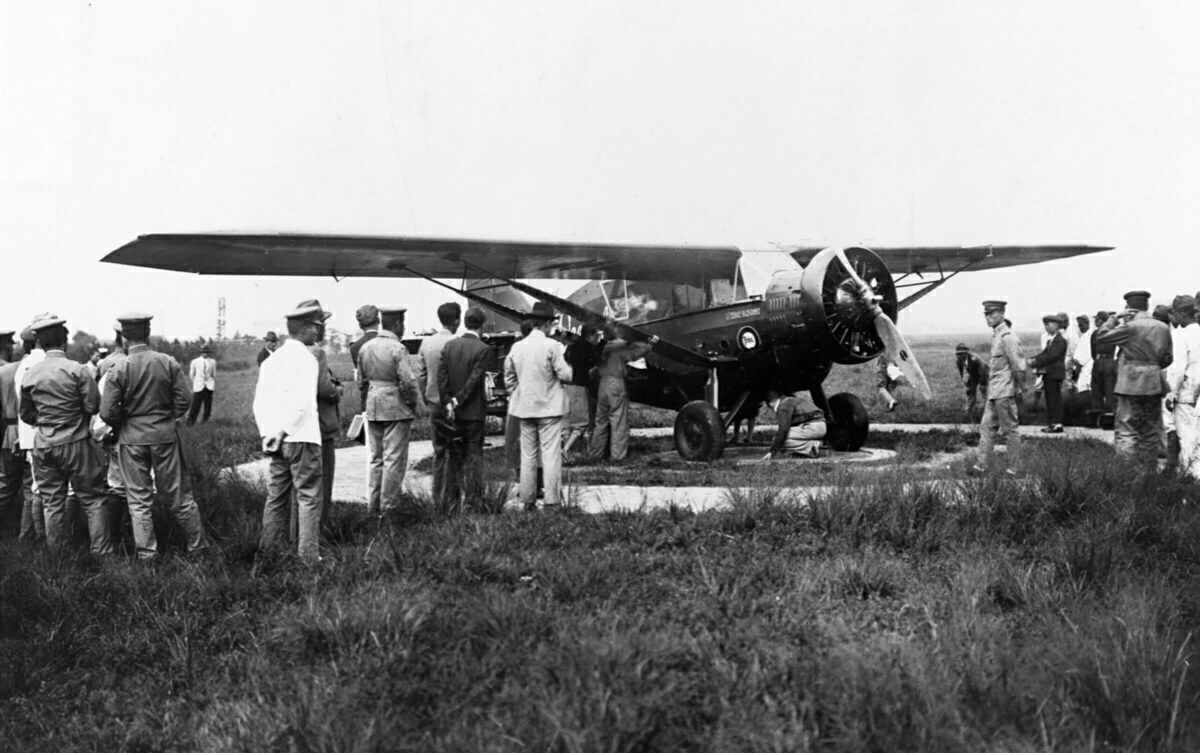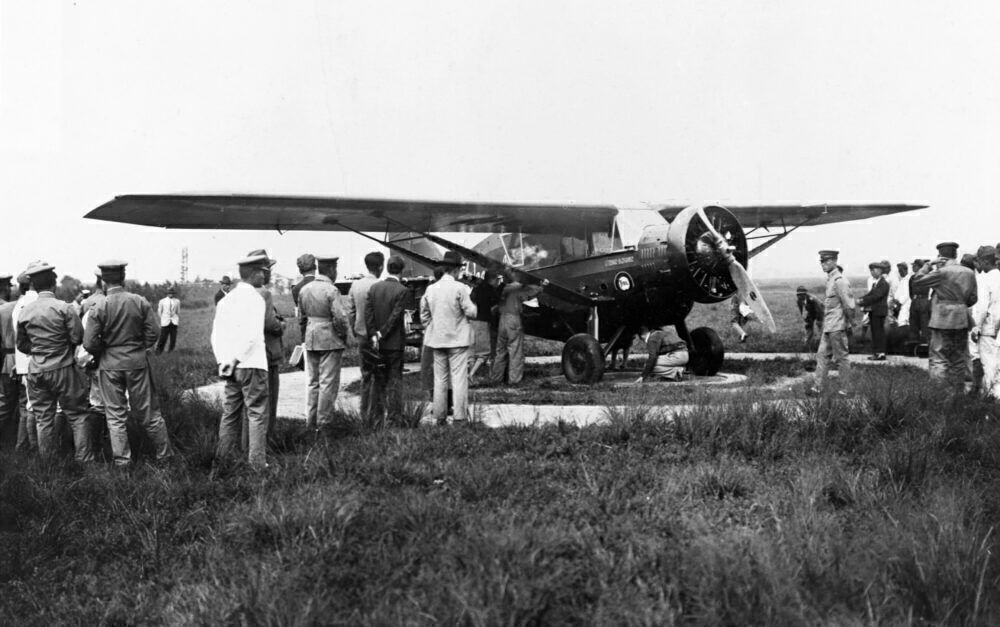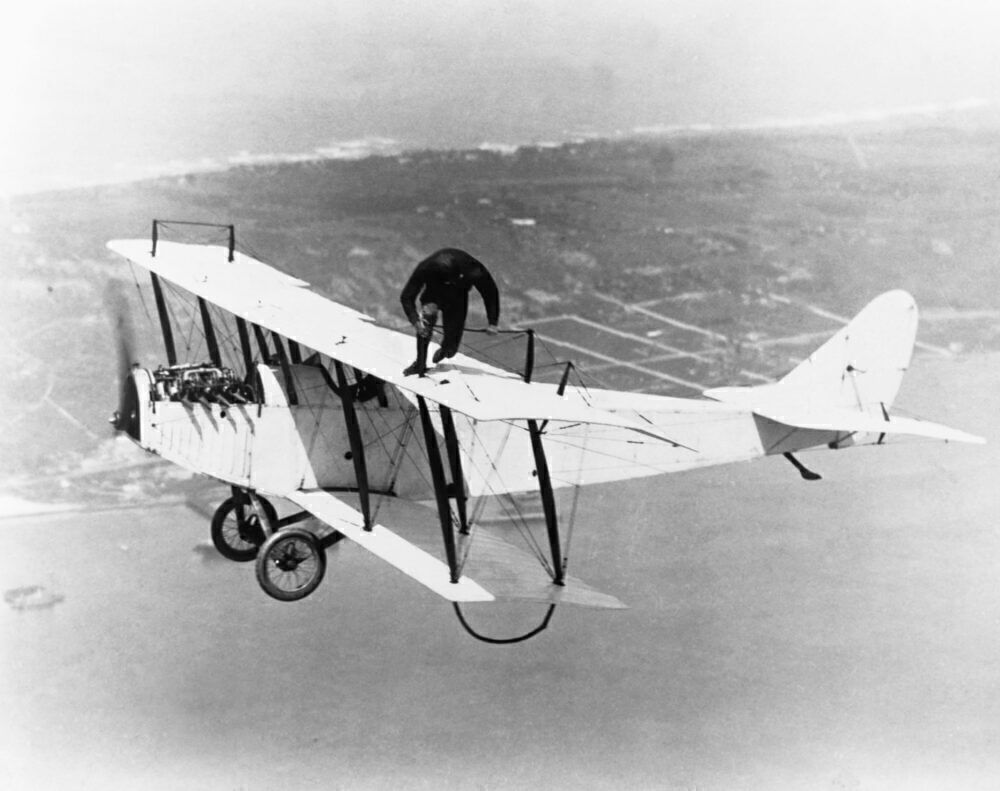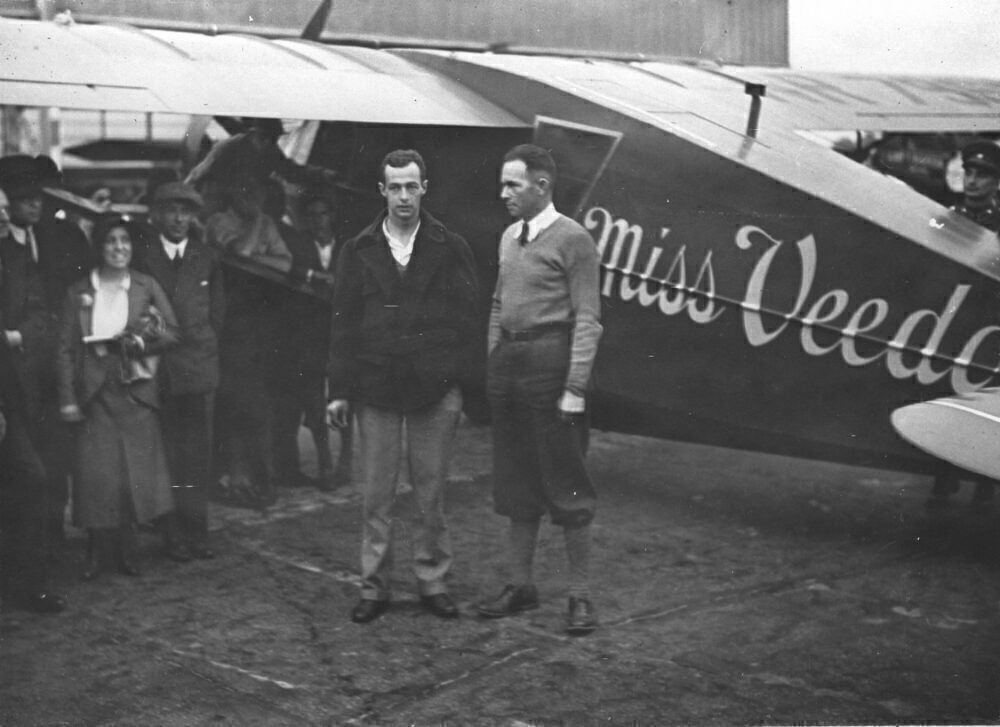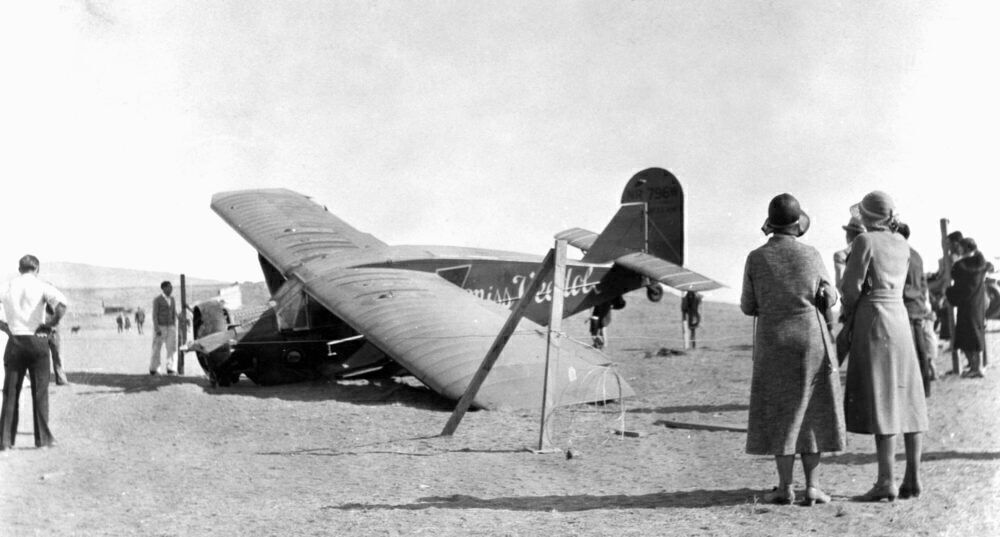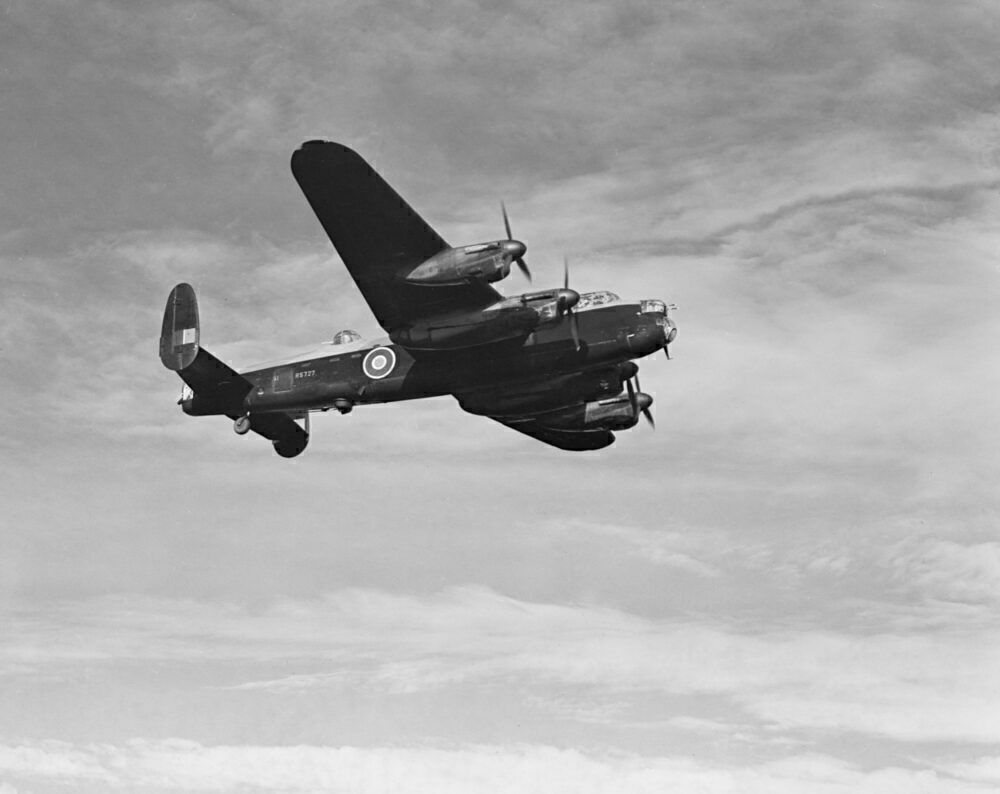Pioneering trips across the Atlantic Ocean are well-spoken about across the aviation spectrum. While these feats are groundbreaking and deserve the attention, early achievements across the Pacific should also be highlighted. In 1931, Clyde ‘Upside-Down’ Pangborn and his co-pilot, Hugh Herndon, Jr., managed to cross the largest ocean in the world by air without stopping for the very first time. Let’s take a look at this unique journey.
No stranger to risks
Pangborn was given the name of "Upside-Down Pang" due to him rolling his aircraft onto its back and fly upside down during his time in World War I. Following a career in barnstorming, exhibition flying, and aerial acrobatics after returning from air service, he had his eyes set on a new challenge.
The aviator was keen on besting the around-the-world speed record. So, he requested the help of his fellow barnstormer, Herndon, to try and beat the then-record of 20 days, four hours, achieved by the German Graf Zeppelin in 1929. Herndon would be a navigator on the job. He also had the cash to fund such a project as he was the offspring of Standard Oil heiress Alice Boardman.
The pair acquired a Bellanca "Skyrocket" monoplane to help them on their adventure. However, in June 1931, the legendary Wiley Post and Harold Gatty set a new record. This situation, however, didn’t deter the duo as they felt they could still beat the new record of eight days, 15 hours, and 51 minutes.
On their way
So Pangborn and Herndon left Roosevelt Field to head northeast on July 28th, 1931. The two were actually making good ground to catch up to the record, but they soon ran into trouble. They got lost when flying over Mongolia, and after the pair found their way, there was a severe rainstorm in Siberia. As a result of these issues, there wasn’t much hope to beat the record. Therefore, the pilots abandoned the mission.
Despite the failed attempt to circumnavigate the globe, the conditions allowed for another record to be achieved. While waiting for the weather to improve, they considered taking on a challenge set by a Japanese newspaper. A $25,000 (~$435,700 today) prize was on offer to someone who could make the first nonstop flight between Japan and the United States. It’s important to note that Alaska wasn’t a state at this time, which is where Post and Gatty stopped off.
One of the most difficult issues that the two pilots had to deal with in regard to this trip was before they set flight back across the ocean. They were met with angry authorities after arriving at Tokyo’s Tachikawa airport. Tensions were high as Japan was at war with China at the time. So, officials were concerned about unannounced foreigners flying in and taking photos in sensitive areas.
Pangborn said the following, according to HistoryNet.
“We were arraigned on three counts. That we had flown over fortified areas and that we had photographed these areas. True we didn’t have a flight permit with us, but we assumed it would be routine for our embassy to arrange it. As for flying over fortified areas and taking pictures, we were just tourists taking what we thought were pretty landscape shots.”
Subsequently, Pangborn and Herndon were arrested on charges of espionage and sent to jail. After a guilty verdict, they were fined $1,050 each and were released.
The pair were only given one shot to take off for the US in a Bellanca plane, nicknamed Miss Veedol. If they landed back in Japan, they would have to go back to prison, and the aircraft would be taken away.
Preparing for the return
There were concerns about the limited fuel supply of the aircraft. So, the duo created a strategy to reduce the plane's weight, which would allow it to fly for longer. Pangborn fitted a device so he could jettison the aircraft’s landing gear after lifting off. Altogether, he determined that Miss Veedol would increase its range by about 600 miles (966 kilometers) without the gear.
Finally, Pangborn and Herndon departed Samishiro Beach, Japan, on October 4th, 1931, to head to the State of Washington. The United States Centennial of Flight reports that there were issues soon after takeoff as two of the landing gear’s struts remained behind despite the jettison.
This factor meant that the plane wouldn’t touch down if they attempted a belly landing. So, using his barnstorming experience, Pangborn climbed onto the wing of the plane at 100-mile per hour winds and, in freezing temperatures, set about loosening the struts.
At the time, equipment was limited compared to what subsequent transoceanic voyagers had. Moreover, there wasn’t much space to fit much on board the aircraft.
The Smithsonian National Air and Space Museum shares:
“Supplies for the overloaded Bellanca included 915 gallons of fuel, 45 gallons of oil, sandwiches, tea, and chicken. The plane did not have a radio, life raft or emergency equipment. Jettisoning the landing gear decreased the load by 300 pounds and added 15 mph to the airspeed.”
Nonetheless, these difficulties did not prevent Pangborn and Herndon from achieving their mission. After 41 hours 13 minutes, they belly-landed at Wenatchee, Washington. Overall, the flight was a success!
National heroes
Both Pangborn and Herndon were military veterans. Notably, Herndon met Winston Churchill in the Bahamas during World War II. He then joined the Royal Canadian Air Force and shipped bombers to the UK before the United States joined the conflict.
Pangborn also offered his services to the war effort. He helped to launch the Ferry Command of the Royal Air Force. Being a senior captain, he was involved with over 175 ocean deliveries of military planes.
Altogether, the pair were well decorated both in the public and military sphere. According to The National Aviation Hall of Fame, honors include the Harmon Trophy, the King’s Medal, and the White Medal of Merit.
Pangborn passed away in New York on March 29th, 1958. He was 63 years old and was laid to rest with his military honors at Arlington National Cemetery. Herndon died on April 5th, 1952, in Cairo, Egypt, and is buried at Titusville, Pennsylvania. Miss Veedol was sold and renamed The American Nurse soon after the transpacific flight. However, the plane disappeared after last being seen in the eastern Atlantic in 1932.
This transpacific feat emphasizes that there can be opportunities even when there is failure. If the two pioneers didn’t struggle during their around the world attempt, they wouldn’t have become the first to fly nonstop across the Pacific Ocean.
What are your thoughts about the first-ever nonstop transpacific flight? Are there any other early aviation achievements that you’d like us to cover? Let us know what you think of these feats in the comment section.

